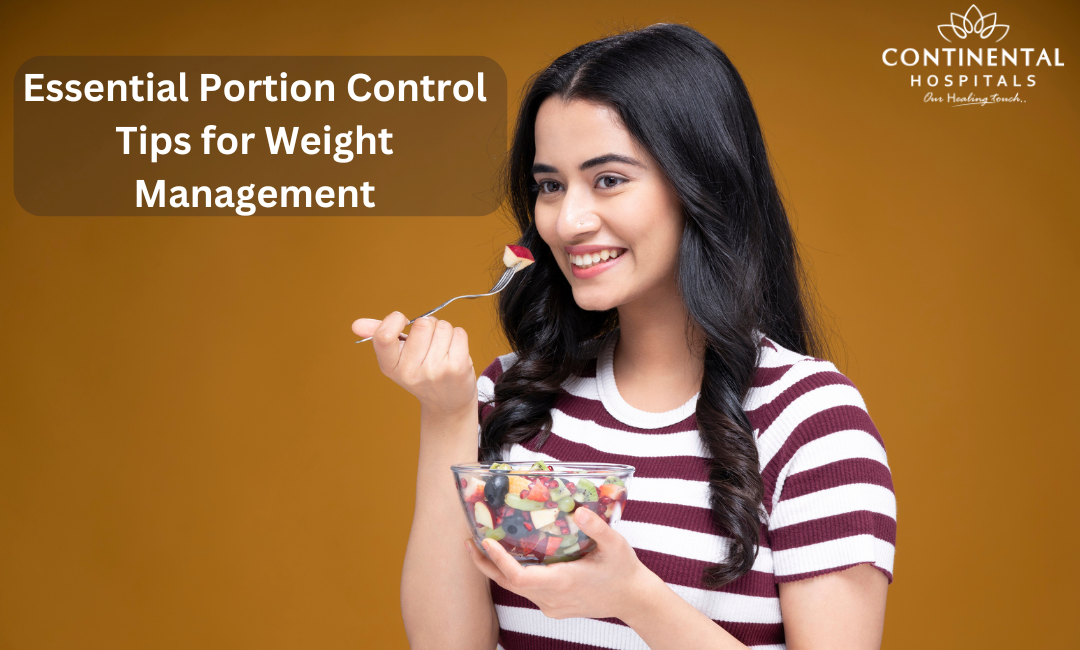In the quest for weight management, mastering portion control emerges as a fundamental strategy that can spell the difference between success and frustration. Portion control isn't about deprivation or strict rules; rather, it's about finding the balance between enjoying the foods you love and managing your caloric intake effectively. Understanding portion control empowers individuals to take control of their eating habits, make informed choices, and achieve their weight loss goals in a sustainable manner.
Portion control goes beyond simply knowing what to eat—it's about understanding how much to eat. By moderating portion sizes, individuals can enjoy a wide variety of foods while still managing their calorie intake, promoting balanced nutrition, and supporting long-term weight management. In this comprehensive guide, we'll delve into the science behind portion control, explore practical tips for mastering portion sizes, and equip you with the tools you need to conquer your weight loss journey with confidence and ease.
Understanding Portion Control
Portion control involves managing the quantity of food we consume at each meal or snack, ensuring that we neither overeat nor undereat. It's about striking the right balance to meet our nutritional needs while avoiding excess calories that can lead to weight gain. Unlike restrictive diets that eliminate entire food groups, portion control allows for flexibility and moderation, making it a more realistic and enjoyable approach to long-term weight management.
The Science Behind Portion Control
Portion control is rooted in the principles of energy balance—the relationship between calories consumed and calories expended. When we consume more calories than our bodies need for energy expenditure, the excess is stored as fat, leading to weight gain over time. By controlling portion sizes and moderating calorie intake, we can create a calorie deficit that promotes weight loss. Additionally, portion control helps regulate hunger and satiety signals, preventing overeating and promoting mindful eating habits.
Practical Portion Control Tips
Use Visual Cues
Visual cues can be powerful tools for estimating portion sizes without the need for measuring cups or scales. For example, a serving of protein should be roughly the size of your palm, while a serving of grains or starchy vegetables should be about the size of your clenched fist. Fill the remaining space on your plate with non-starchy vegetables to add volume and fiber without excess calories.
Read Food Labels
Become familiar with food labels and serving sizes to make informed choices about portion control. Pay attention to portion sizes listed on packaging and use measuring cups or a food scale when needed to ensure accuracy. Be mindful of hidden sources of calories, such as added sugars and fats, and opt for whole, minimally processed foods whenever possible.
Practice Mindful Eating
Mindful eating involves paying attention to hunger and satiety cues, as well as the sensory experience of eating, such as taste, texture, and aroma. Slow down and savor each bite, chewing thoroughly and enjoying the flavors of your food. Avoid distractions, such as television or electronic devices, while eating to stay present and in tune with your body's signals of fullness.
Downsize Your Dinnerware
Using smaller plates, bowls, and glasses can trick the eye and mind into perceiving larger portions as more satisfying. Opt for salad plates instead of dinner plates and choose tall, narrow glasses for beverages to reduce portion sizes without feeling deprived. This simple trick can help control portion sizes and prevent overeating without requiring conscious effort.
Plan and Prepare Meals in Advance
Meal planning and preparation can help you control portion sizes and make healthier food choices throughout the week. Take time to plan your meals, create a grocery list, and prep ingredients in advance to streamline mealtime and reduce the temptation to rely on convenience foods or oversized portions. Consider batch cooking and portioning out meals into individual containers for easy grab-and-go options.
Practice Portion Control When Eating Out
Eating out at restaurants can pose challenges for portion control, as serving sizes are often larger than what we need. To avoid overeating, consider splitting a meal with a dining companion, ordering appetizers or side dishes as your main course, or asking for a to-go container to portion out leftovers before you start eating. Additionally, be mindful of portion sizes when choosing menu items and opt for lighter, healthier options whenever possible.
Conclusion: Mastering Portion Control for Lasting Weight Management
Portion control is a cornerstone of successful weight management, offering a practical and sustainable approach to calorie control and mindful eating. By incorporating these essential portion control tips into your daily routine, you can take control of your eating habits, manage your weight more effectively, and enjoy a healthier relationship with food. Remember that portion control is not about deprivation or strict rules but rather about balance, moderation, and making informed choices that support your health and well-being. With patience, practice, and persistence, you can master portion control and achieve lasting success on your weight loss journey.
Related Blog Article:
1. Unveiling the Hidden Risks of Processed Food Consumption
2. Plant-Based vs. Animal-Based Nutrition
3. Green tea for weight loss: Does it work?
4. Understanding Electrolytes: Key Players in Summer Hydration
5. Healthy Habits for Weight Management
.webp)














